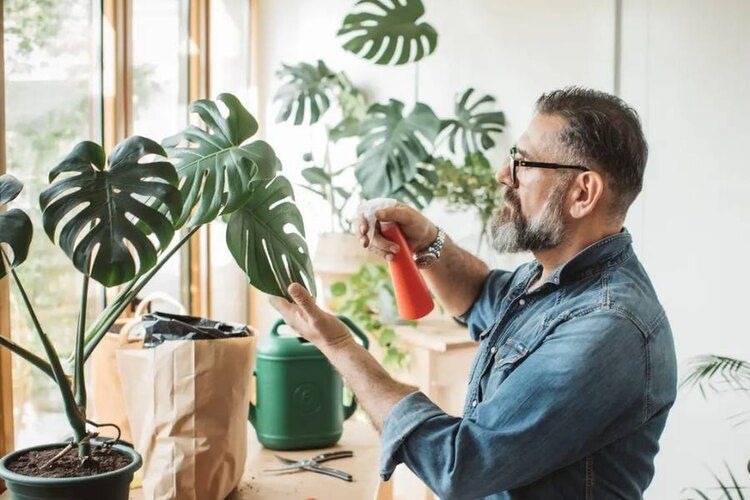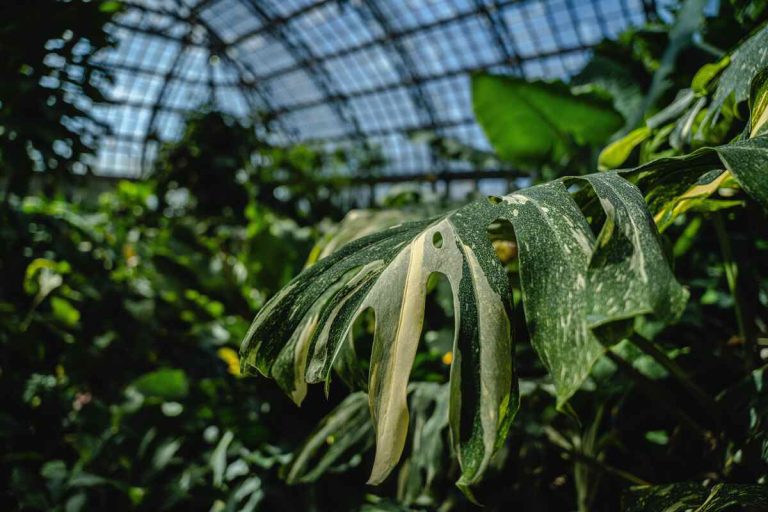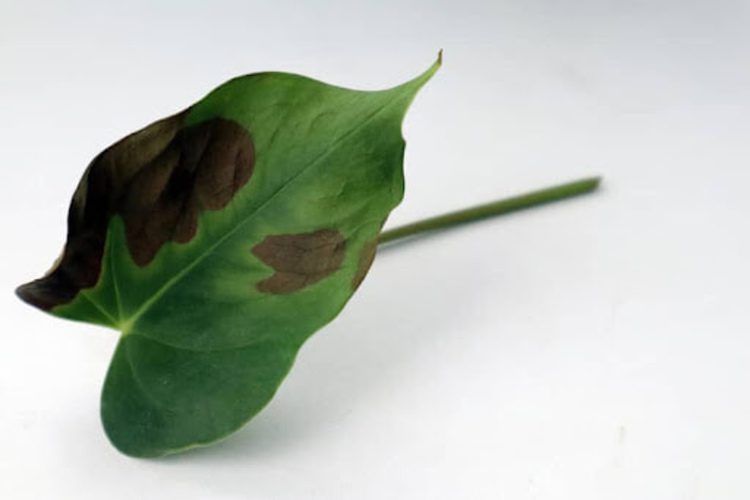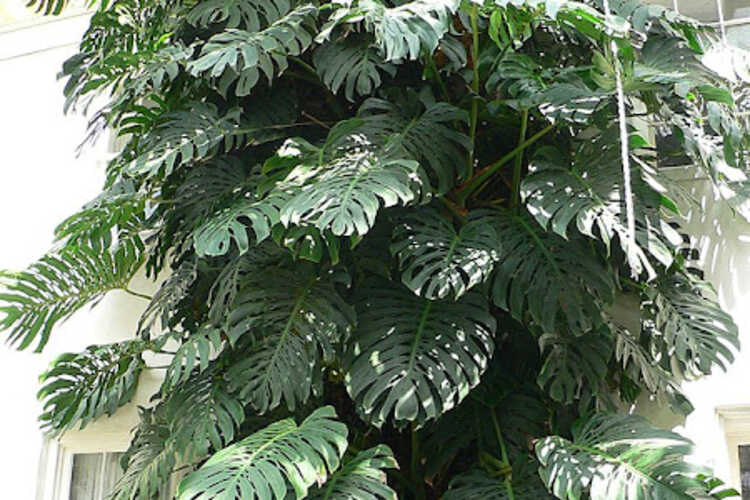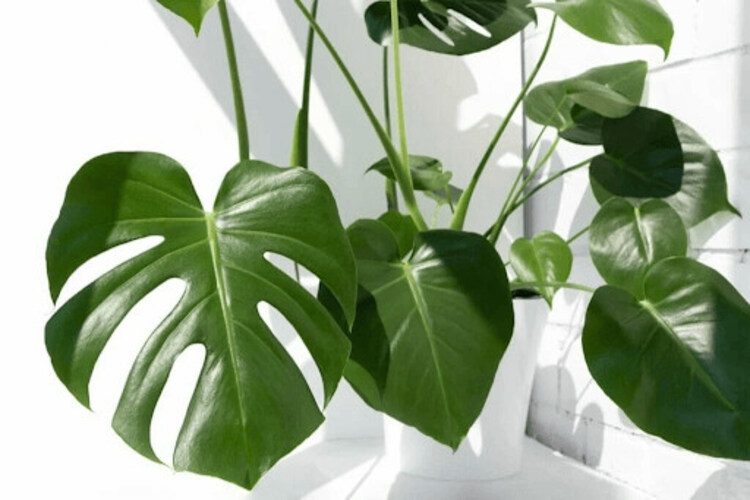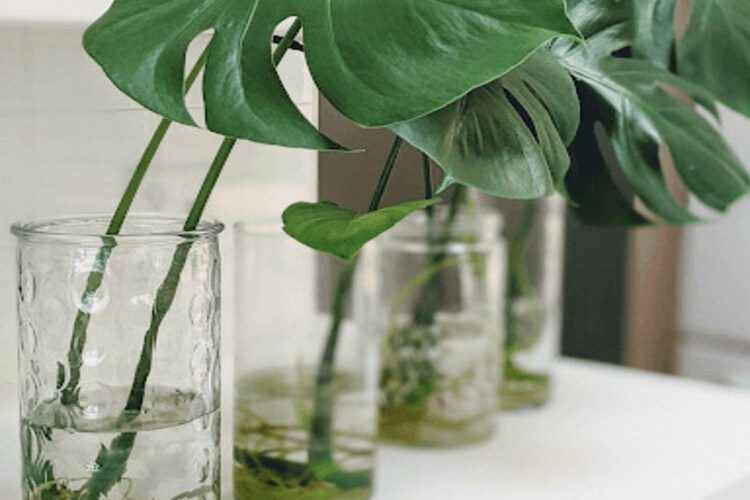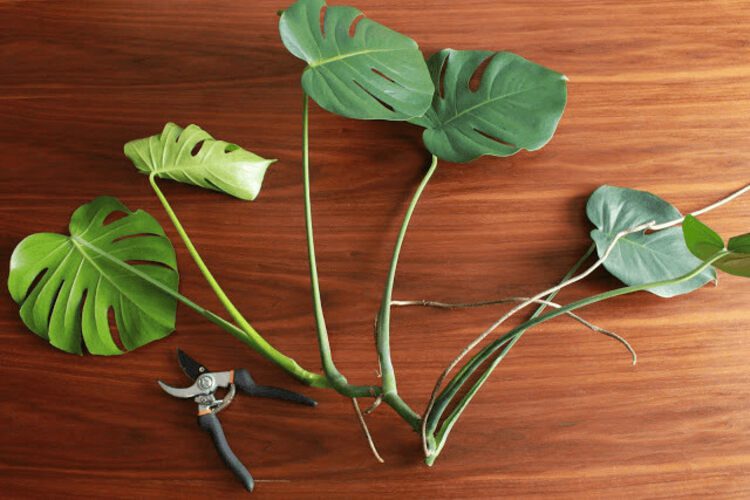How To Fertilize Monstera: Signs To Feed Your Plant
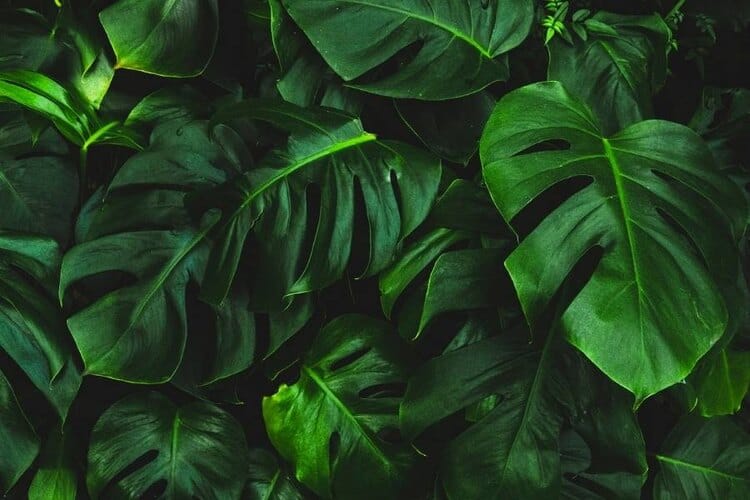
To keep your monstera fresh, you will need to feed it because this plant rarely yields fruit and is slow-growing in an indoor environment. Moreover, it doesn’t require much fertilizer, but it can be affected if you don’t take care of it. We’ll go over all you need to know about fertilising these plants at home, including when and how to fertilize Monstera to give them the best chance of surviving. Let’s dive right into the details!
How To Fertilize Monstera?
Choose the NPK ratio 3-1-2 or the balanced 2-2-2 to fertilize Monstera plants. The type of Monstera you have will determine how you fertilize it. It would be best to use half the average strength of liquid fertilizer.
In other words, if the supplier suggests one tablespoon per gallon, use ½ teaspoons instead. It is best to use this mixture to feed your plant.
It is not necessary to start with a lower quantity of fertilizer and gradually increase it up to a half-dosage. Follow the instructions provided by the supplier for the appropriate dosage. If you’re using a 20-20-20 all-purpose fertilizer outdoors, combine one teaspoon per gallon of water and ½ teaspoons per liter of water.
You’ll need to use the double quantity if you’re using 10-10-10. Start to apply slow-release and granular fertilizers in the springtime, then follow the company’s recommendations for additional applications. If you’re growing Monstera outside, use the full dosage, not half. However, remember to start with a smaller quantity and work your way up.
Signs When Monstera Needs Feeding?
If you see any of the following symptoms, your plant may require fertilizer.
No Growth
It might be due to a lack of nutrients if monstera is not growing despite getting enough water and light.
Yellow Leaves
These leaves can indicate many issues, including too little or too much water as well as a chilly climate. They may indicate that your plant requires fertilization. Your plant probably requires fertilizer if all the leaves are somewhat yellow.
When To Fertilize Monstera?
As previously said, your Monstera will deplete the nutrients in the potting soil soon. As a result, replacing these minerals with a high-quality fertilizer is critical for its long-term viability.
Understanding when to feed an indoor Monstera is relatively straightforward. Because it grows the most in the summer, these are the months when we should nourish it most frequently. You must fertilize your plant every two weeks during these fast-growing months. Do not fertilize the plant once the weather gets cooler and the Monstera becomes dormant.
How Often Does Monstera Need Fertilizer?
The frequency with which you fertilize your plant is dependent on how quickly it grows. Monsteras overgrow in the summer and slow down in the winter. It will require more fertilizer when it is developing. Of course, this does not apply to everyone! Monsteras are native to the tropics and can be grown all year if the weather is suitable. In colder climates, they may become dormant and require less frequent fertilization.
It is important to observe your Monstera’s development signs throughout the year. Please keep track of when it develops faster and when it calms down.
Spring
When you witness new growth on the Monstera, start feeding it in the spring. It is still waking up after the winter, so a complete fertilizer isn’t necessary just yet. Once every month, apply ¼ to ½ percent of the suggested strength of the nutrient until the temperature begins to rise this summer.
Summer
This is the time when your Monstera will be growing the fastest, which implies it will need the most nourishment! Your plant will enjoy being fed at ½ to full capacity every 2 to 4 weeks in the summertime. Slow-release fertilizers should be applied every four months. But keep in mind that overfertilizing Monstera plants can cause root burns and should be avoided.
Fall
When the temperature cools down in the autumn, the Monstera will slow down its development. You should reduce the number of fertilizers it receives as a result. Increase the interval between feedings: once a month. Reduce the intensity of the fertilizers to ½ or ¼ percent.
Winter
Please do not feed your Monstera when it is dormant in the winter. It won’t require additional nutrients if it isn’t growing. If you add too much, you may burn the plant. If you live in a tropical region where it does not get cold in the winter, you can fertilize your plant as it grows all year.
How To Use Fertilizer?
There is a suitable way to apply each kind of fertilizer. In this section, we will show you the appropriate way to use granular and liquid fertilizers, as well as slow-release ones.
Granular And Liquid Fertilizers
To ensure accurate measurement, mix the fertilizer with water before placing it in the watering can. Because most fertilizers specify how much chemical to combine with a gallon of water, having a container that size dedicated to your Monstera is excellent.
Get a gallon of fresh water. Mix one dosage of fertilizer into the liquid (depending on the previous section). Pour it into the watering can after making sure it is evenly blended. Fill your Monstera well with water until the water drains from the bottom. If fertilizer water remains in the bottom pan, make sure you pour it out. Depending on the growing season, repeat every 2 to 4 weeks, in between feeding as usual
Slow-Release Fertilizer
It is best to apply slow-release fertilizers less regularly to your Monstera, closer to every four months. Place ½ appropriate dosages of fertilizer on top of the ground. Remember to water it thoroughly and don’t reapply it for the next 3–4 months.
How To Fix Over-Fertilization?
You are more likely to over-fertilize the Monstera, causing the roots to burn. The salts in the fertilizers take moisture from the roots of your Monstera, making it thirsty. These particles also influence the soil pH, resulting in lower nutrient bioavailability. That’s what we don’t want to happen!
Signs Of Over-Fertilization
There are several telltale indicators of overfertilization.
Crunchy and Brown Leaf Tips And Edges
The appearance of brown, crispy leaves indicates there is something too saline in the soil, scorching your Monstera. Extremely hard water may cause this, but excess fertilizer is more likely to be the culprit.
White, Crusty Soil
If the soil begins to look crusty and white, that’s because it can’t retain any more fertilizer!
Slow Growth
Too many nutrients will cause the soil pH to become so unbalanced that it will not absorb nutrients from the soil. The plant’s growth will slow if it cannot take up those nutrients.
Yellow Or Dropping Leaves
This plant uses its leaves to interact, indicating when you give them too much fertilizer. When your plant takes in too much fertilizer, its leaves will begin to droop, turn yellow, and fall off.
How To Fix Over-Fertilization?
Once you’ve determined that you have overfertilized your Monstera, it’s time to get rid of all of the excess fertilizer. Remove any white crust that has formed on top of the ground carefully. Please do not take more than ¼ of the soil while it’s stressed; you do not want to mess its roots up too much. You can also propagate Monstera during this time to save it. Propagating involves taking a cutting from the plant and rooting it in water or soil. This will give the plant a fresh start and help it recover from the over-fertilization. After you have flushed the soil and replaced it with fresh soil, you can replant your Monstera.
The simplest way is to flush the plant’s soil inside the tub or outside with a sprayer, where there are lots of drainage holes! This only works if your Monstera’s pot has proper drainage. They are susceptible to root rot if you keep them damp for an extended period. Continue to water the plant until it emerges from the pot’s bottom, and then continue the process. With this deep soaking, the excess salts and fertilizers will be flushed out of the soil. Replace the upper soil with fresh soil and replant your Monstera wherever you typically store it once the water drains completely. For another month, remember not to fertilize.
Can You Use Compost For Fertilizing Monstera?
All-natural fertilizer, like worm castings, is another alternative for fertilizing the Monstera. It will be similar to what the plant would experience outside its native habitat.
Plants outside usually get nutrition from decaying plant debris on the ground’s surface. So, natural fertilization includes insects and worms that will aerate and nourish the soil. An all-organic worm fertilizer is the most excellent form of compost to utilize. Composting is a simple process, and you can feed it once or twice a year, depending on the plant’s health.
Apply a ¼ to ½ inch layer, gently mix it with the fingers, and then water well. The worm castings will improve your soil, feeding your Monstera in turn.
Why Do Monstera Plants Need Fertilizer?
Even indoors, Monsteras may grow to be quite enormous. Ideal container size, lighting conditions, and nutrients can help it grow up to 8 feet tall. Because most indoor soil is supplemented with nutrients, houseplants can get all the nutrients they require right away. On the other hand, Monsteras exhaust all the nutrient content needed to survive after 6 to 12 months in the same soil and pot.
Rainwater and the jungle floor provide these nutrients to plants in nature. However, inside the room, the plant must rely on you for this part of its survival. Although fertilizer is plant nourishment, it is more akin to vitamins than plant food. Photosynthesis is how plants transform gases, water, and sunlight into food.
They do, however, require substances in the soil to be nutritional; that’s why fertilizers are so crucial. However, if you want this lovely plant to survive for the coming years, you will need to keep track of its nutrients. If you feed your Monsteras using a high-quality fertilizer and prune the plants during the spring or summer, you’ll get a robust, life-loving plant in return.
What Are The Best Fertilizers For Monstera?
Now you understand why these plants require fertilizer. It’s time to figure out which fertilizer is ideal, and you can find a product with similar nutrients such as phosphorus, nitrogen, and potassium content. 2-2-2, 3-1-2, 2-4-2, and other ratios are acceptable. Fertilizers, both solid and liquid, can produce excellent effects. Be careful to dilute your fertilizer, regardless of the type. It’s preferable to under-fertilize rather than over-fertilize your plants.
Common Types Of Fertilizers
You should be worried not just about the nutrients but also about the type of fertilizer. The type of fertilizer you use influences how you use it and how quickly it is absorbed by plants.
Liquid fertilizer is usually potent, and you must dilute it with water before use. It can then be applied to the plant’s leaves once they are cut. Solid fertilizer is dusted over the soil’s surface or incorporated into the ground. Powdered or granular fertilizers are available on the market.
What Is Fertilizer Made Of?
Fertilizers are made from a range of different components. It’s helpful to break fertilizer down into synthetic and organic categories to comprehend these ingredients better.
Organic Fertilizer
Biofertilizer is from natural sources. Composted manure, bone meal, rock dust, and seaweed are frequent ingredients in organic fertilizers. These fertilizers are slower-acting and less nutrient-dense than synthetic fertilizers.
Synthetic Fertilizer
Synthetic fertilizer is manufactured in a laboratory. Ammonium phosphate, potassium chloride, and ammonium nitrate are examples. These fertilizers can be either fast- or slow-acting.
How Much Fertilizer Should I Use?
The guidelines for each compost you purchase will be on the container. During the intense growing season, only apply half the amount of effective synthetic fertilizer. Biofertilizers are gentler, and you can use them at the strength specified on the bottle. When the plant grows slower in the fall or spring, you’ll need to use less fertilizer.
That implies using ¼ times the recommended dosage for synthetic fertilizers and ½ times the recommended level for biofertilizers. When your Monstera is not growing in the wintertime, don’t fertilize it. It is always best to take extra precautions. Your plant should have even less fertilizer than too much. Your Monstera will slow down its development or drop some leaves if it requires additional fertilizer.
Conclusion
Now, you may know everything about how to fertilize Monstera after reading this article. If you have any questions about this, please let us know. Swipe Garden will answer as soon as possible.


